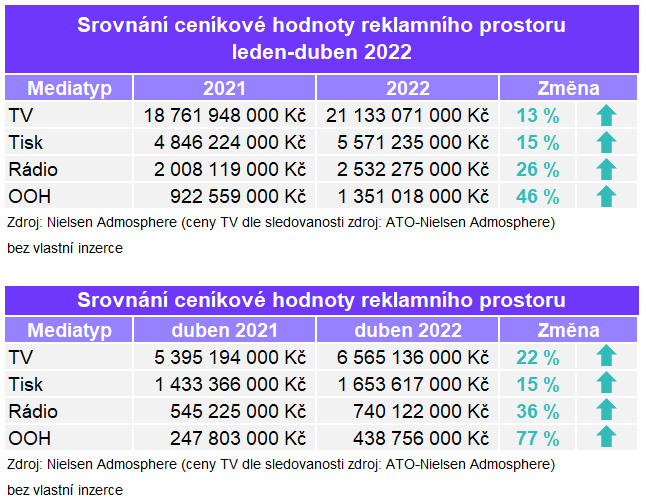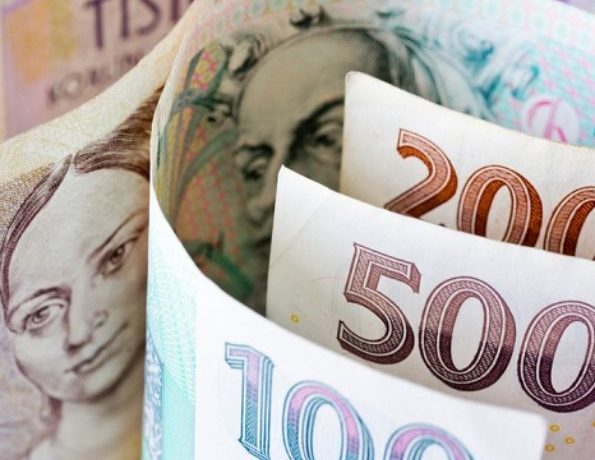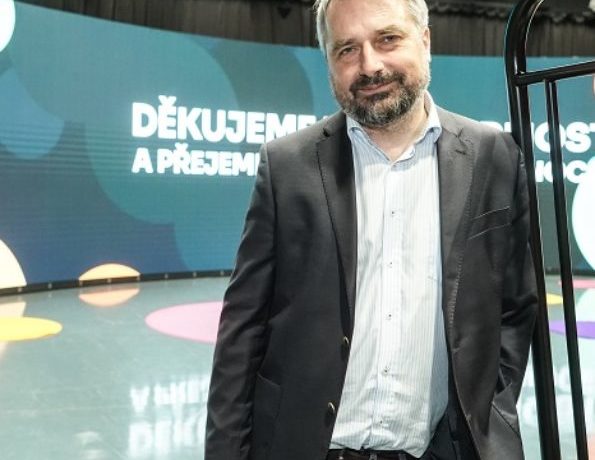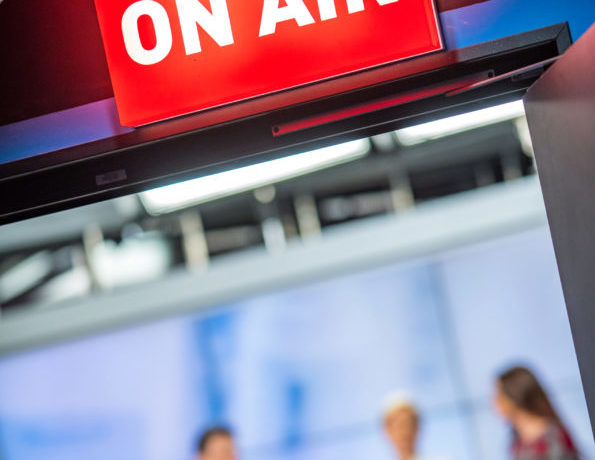The Prima Group is trying to counter the expected outflow of advertising GRPs in linear TV and will introduce auction sales for part of its advertising space from 2023, following restrictions on rewind advertising in IPTV. And it is already announcing price increases.
The Prima Group and its media agency Media Club will come up with a novelty in selling advertising space from 2023. Following efforts to cope with the expected outflow of advertising GRPs in linear TV, it will introduce auction sales for part of its advertising space after limiting rewind advertising in IPTV. Clients with the lowest CPP will fall into it, Prima’s commercial director Vladimir Pořízek described in an interview.
At the AdCross tool presentation, you described trends in video content viewership, predicting a decline in linear TV and an increase in video-on-demand (VOD) viewership. Specifically, how do you estimate that linear TV viewership may evolve in 2022 and next year in 2023, and what trends do you expect more specifically for VOD?
According to the numbers, we can see that linear TV viewership grew until 2017, then stagnated for a year and has been declining since 2019, also due to the large number of VOD services on the market. This decline was halted by the covid-19 pandemic, when people stayed at home and watched TV. After people returned to normal life, this decline started to show again. For the number of GRPs available in the market, the situation is even more complicated because the ad-skipping capability of IPTV operators takes away a lot of free space to air ads.
We expect the decline of linear TV to continue in the future. Firstly, the number of VOD services will grow – Disney+, Amazon Prime are due to come to our market this year alone, and there will be a joint service between Discovery+ and Warner Bross. And there will also be a growing trend towards watching TV via IPTV operators with delayed viewing services. In Sweden, for example, linear TV now accounts for only 50% of all video viewing.
How much might the number of TV GRPs decrease this year and next as a result of these changes?
Our expectations are somewhere around 3% in the 15-69 target group and 5% in the 15-54 group per year, but these are rather optimistic expectations. We’ve seen much bigger and faster inventory declines around the world, and that was when there weren’t as many VOD services in the market and there wasn’t as fast internet.
What will this mean for Prima as an important player in the commercial TV market? How will you respond to this?
We have been watching this trend for a long time and preparing for it for no less time. Leaving aside the inevitable price increases, one of the next “steps” is the cross-platform metering we introduced this year. It may not make up for all the lost inventory, but we firmly believe that eGRPs will increase and at least partially limit the decline.
So do you expect to see further increases in TV advertising prices? Since when and by how much?
That will be a reality in a declining market, unfortunately. The only question is how much prices will rise and how these price increases will happen. Many clients are convinced that tenders will always bring the price down. They often hear this from their advisors – media auditors. But this fact may have been true in a market where the media space was not sold out. This year, unfortunately, we had to turn down a few long-term clients who had a low price and listened to their advisors’ voices that they should insist on these, for us, no longer feasible conditions… So they ended up with a competitor, but at a much higher price… More than a third of our inflation this year is driven by the fact that we are limiting clients with low CPP. Then for next year, we are preparing another innovation, and that is making deals involving auction principles in the normal negotiation.
What exactly does this mean? Does it mean that you will sell the space at auction?
Yes, we will, but not all of it. We will be selling most of the space in a similar way as before. We do intend to sell the last remnants of our inventory to the lowest bidding clients by auction.
“Price growth will already be a reality in a declining market. The only question is how much prices will rise and how this price increase will happen.”
So what will it look like?
Our negotiations will be divided into several phases. The first phase is called the “preliminary round”. In this preliminary phase, all our clients can ask us for an offer. If they like the offer and take advantage of it, the deal is already done. In the second phase, the standard negotiation as clients and agencies know it takes place, with the only difference that the deal is closed not only by both parties agreeing on the price, but also another condition must be met. This condition is the profitability for the Media Club or TV group. This second phase is divided into several rounds and only a limited number of deals are concluded in each round. Which deal is concluded and in which round is then determined by the profitability for the TV group, which is determined by both the CPP and the volume. The higher the CPP, the better for Media Club/TV, and of course the higher the guarantee, the better for Media Club/TV. Usually, however, clients want a lower CPP for a higher guarantee. So this balance is a delicate thing. The last stage is then the actual auction, which is where the clients with the lowest CPP will fall. But even this stage is limited by space, so some clients may not be reached at all. This should motivate clients to close their deal in the preliminary stage or increase their CPP in the auction.
Do you really believe this will work?
Of course, it will only work if there is an overhang of client demand over TV supply, which is very difficult to predict these days. Nobody knows what will happen next. Will there be a recession? How quickly? For how long?
But we are counting on all possibilities. If there is no excess demand, we always have the option to sell the space without an auction and accept all clients. But even that would only be a matter of a year. With the decline in GRPs that we expect, the demand must necessarily climb back above the supply within one to two years at most.
“Clients with the lowest CPP will fall into the last phase of the auction. But even this phase is limited by space and so some clients may not be reached at all.”
Which type of video on demand (AVOD, SVOD, TVOD) will develop most dynamically on the Czech market and how will the development of the SVOD market be affected by the arrival of foreign players this year?
I think neither. Until now, we have been fed by advertising, so I hope that it will be the so-called HVOD models, i.e. models where clients pay a certain amount for a premium VOD service, but the amount is much less than the usual amount, because viewers are served a limited amount of advertising in addition to exclusive content. As the number of VOD services increases, so will the willingness of viewers to migrate between services. It’s a trend we’re seeing across platforms. The vast majority of viewers take the opportunity to pay for a service, test it for three months and then perhaps cancel it again. That’s why we see the hybrid model as an appropriate solution for our market. Viewers can minimize the fee and retain multiple services. According to many market surveys, more than 75% of viewers perceive advertising as payment for services and are therefore comfortable with it. Moreover, even Netflix has already announced that it will introduce this service model.
Prima also wants to enter the SVOD field this year. Do you already know whether you will sell advertising as part of your SVOD service and what monetization model will you choose?
I believe in the freedom of choice for users, so I hope we will offer all models of content monetisation. But we haven’t reached a final decision yet.
From June, there should also be an announced plan to limit ad skipping in back-viewing for IPTV operators. Last year, you reported that you lost 30,000 GRPs due to the skipping option. How many GRPs can you “save” with this move?
Our main motivation for having to take this step was to prevent further GRP loss, as the trend of GRPs starting to decline was exponential rather than linear. With the growing share of IPTV operators in the distribution of our channels and the growing share of deferred viewing/back-viewing, we simply wouldn’t have anything to sell in a couple of years. The second question is whether we will add any GRPs. I firmly believe that a smaller portion of our inventory will even come back. But we really don’t expect any big numbers.
Prima is talking about a total video strategy for the coming years. Can you give an indication of what the distribution of Prima’s trading inventory will look like for next year and how the trading will be distributed between linear TV, delayed TV or different types of video-on-demand?
We currently have about 3% of our viewership in online inventory, but we only use about 1% on average for eGRPs. The rest we sell on impression as standard. Deferred viewing is currently around 14% and we expect to see growth there in the future. Given that operators have a choice of how to limit ad rollover – for example, by shortening the ad block or replacing linear advertising with online advertising – it will be difficult to predict whether deferred or online inventory will grow faster. But as I said, the classic linear one is definitely not going to grow.
“Our goal is for the online inventory, that we use for eGRPs, to grow at least 1.5% every year. We would like to have at least 10% of inventory in online within five years.”
How will these changes be reflected in the inventory supply in about five years?
Our goal is for the online inventory we use for eGRPs to grow by at least 1.5% each year. We would like to have at least ten percent of inventory online within five years, where we can better reach users with advertising, adjust frequency and, most importantly, substantially improve the affinity of our clients’ campaigns through targeting.
Vladimír Pořízek, Commercial Director, Prima Group
Vladimír Pořízek worked at Prima Television for almost five years as CFO until 2012, after which he headed the buying association Opera of the Omnicom Media Group. In 2014, he returned to Prima as Chief Operating Officer and was later appointed Commercial Director. Before joining Prima, he was CFO of media agency PHD until 2007.
Source: mediaguru.cz








